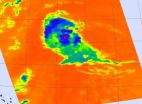(Press-News.org) While your DNA is unique, it also tells the tale of your family line. It carries the genetic history of your ancestors down through the generations. Now, says a Tel Aviv University researcher, it's also possible to use it as a map to your family's past.
Prof. Eran Halperin of TAU's Blavatnik School of Computer Science and Department of Molecular Microbiology and Biotechnology, along with a group of researchers from University of California, Los Angeles, are giving new meaning to the term "genetic mapping." Using a probabilistic model of genetic traits for every coordinate on the globe, the researchers have developed a method for determining more precisely the geographical location of a person's ancestral origins.
The new method is able to pinpoint more specific locations for an individual's ancestors, for example placing an individual's father in Paris and mother in Barcelona. Previous methods would "split the difference" and place this origin inaccurately at a site between those two cities, such as Lyon.
Published in the journal Nature Genetics, this method has the potential to reveal the ancestry, origins, and migration patterns of many different human and animal populations. It could also be a new model for learning about the genome.
Points of origin
There are points in the human genome called SNPs that are manifested differently in each individual, explains Prof. Halperin. These points mutated sometime in the past and the mutation was then passed to a large part of the population in a particular geographic region. The probability of a person possessing these mutations today varies depending on the geographical location of those early ancestors.
"We wanted to ask, for example, about the probability of having the genetic mutation 'A' in a particular position on the genome based on geographical coordinates," he says. When you look at many of these positions together in a bigger picture, it's possible to group populations with the same mutation by point of origin.
To test their method, Prof. Halperin and his fellow researchers studied DNA samples from 1,157 people from across Europe. Using a probabilistic mathematical algorithm based on mutations in the genome, they were able to accurately determine their ancestral point or points of origin using only DNA data and the new mathematical model, unravelling genetic information to ascertain two separate points on the map for the mother and father. The researchers hope to extend this model to identify the origins of grandparents, great-grandparents, and so on.
The new method could provide information that has applications in population genetic studies — to study a disease that impacts a particular group, for example. Researchers can track changes in different genomic traits across a map, such as the tendency for southern Europeans to have a mutation in a gene that causes lactose intolerance, a mutation missing from that gene in northern Europeans.
A closer look at migration
The researchers believe that their model could have also relevance for the animal kingdom, tracking the movement of animal populations. "In principle, you could figure out where the animals have migrated from, and as a result learn about habitat changes due to historical climate change or other factors," says Prof. Halperin.
###
American Friends of Tel Aviv University supports Israel's leading, most comprehensive and most sought-after center of higher learning. Independently ranked 94th among the world's top universities for the impact of its research, TAU's innovations and discoveries are cited more often by the global scientific community than all but 10 other universities.
Internationally recognized for the scope and groundbreaking nature of its research and scholarship, Tel Aviv University consistently produces work with profound implications for the future.
END
CHAMPAIGN, Ill. — Birds of a feather flock together and – according to a new analysis – so do their lice.
A study of the genetic heritage of avian feather lice indicates that their louse ancestors first colonized a particular group of birds (ducks or songbirds, for example) and then "radiated" to different habitats on those birds – to the wings or heads, for instance, where they evolved into different species. This finding surprised the researchers because wing lice from many types of birds look more similar to one another than they do to head or body lice living on the ...
New Rochelle, NY, August 16, 2012—Every year tribal gaming generates billions of dollars in revenue, creates tens of thousands of jobs, and boosts the economies of many Native American communities. In the state of California alone, tribal gaming has brought in $7.5 billion annually. However, because of the aggressive movement to legalize Internet gambling, which effectively would give states the power to regulate and tax online gambling even on reservations, the financial success of these communities could change. In "Native American Off-Reservation Gaming," an expert roundtable ...
After a surgeon stitches up a patient's abdomen, costly complications -- some life-threatening -- can occur. To cut down on these postoperative problems, Johns Hopkins undergraduates have invented a disposable suturing tool to guide the placement of stitches and guard against the accidental puncture of internal organs.
The student inventors have described their device, called FastStitch, as a cross between a pliers and a hole-puncher. Although the device is still in the prototype stage, the FastStitch team has already received recognition and raised more than $80,000 ...
Ancient pollen and charcoal preserved in deeply buried sediments in Egypt's Nile Delta document the region's ancient droughts and fires, including a huge drought 4,200 years ago associated with the demise of Egypt's Old Kingdom, the era known as the pyramid-building time.
"Humans have a long history of having to deal with climate change," said Christopher Bernhardt, a researcher with the U.S. Geological Survey. "Along with other research, this study geologically reveals that the evolution of societies is sometimes tied to climate variability at all scales – whether decadal ...
Lounging on a sofa while watching a 3D movie is an exquisite pleasure for many film fans. Be that as it may, those nettlesome 3D glasses might diminish the fun somewhat. That's why television manufacturers are working on displays that can recreate the spellbinding magic of three-dimensional television images – without the glasses. Though prototypes of these TV screens already exist, consumers will not have to wait much longer for the market introduction of these autostereoscopic displays. Neverthe-less, the content might be a bit problematic: The 3D movies currently available ...
Fairfax, Va.--The popular spice turmeric packs more than just flavor — it shows promise in fighting devastating viruses, Mason researchers recently discovered.
Curcumin, found in turmeric, stopped the potentially deadly Rift Valley Fever virus from multiplying in infected cells, says Aarthi Narayanan, lead investigator on the new study and a research assistant professor with Mason's National Center for Biodefense and Infectious Diseases.
Mosquito-borne Rift Valley Fever virus (RVF) is an acute, fever-causing virus that affects domestic animals such as cattle, sheep ...
Everyone knows the adage: "If something sounds too good to be true, then it probably is." Why, then, do some people fall for scams and why are older folks especially prone to being duped?
An answer, it seems, is because a specific area of the brain has deteriorated or is damaged, according to researchers at the University of Iowa. By examining patients with various forms of brain damage, the researchers report they've pinpointed the precise location in the human brain, called the ventromedial prefrontal cortex, that controls belief and doubt, and which explains why some ...
Ramadan dinners in the Danish Parliament, staff parties without either pork or alcohol and prayer rooms at the airport are all examples of how religion is becoming more visible in public spaces.
"Prior to the mass migration of the '60s, '70s and '80s, almost all Danes shared similar values and were members of the national Christian church, so religion was not an issue in everyday life. There was no need to discuss neither one's own nor another person's religious viewpoint, and secularisation was a matter of course. Today, it is difficult to be in a public place, read ...
VIDEO:
An animation of satellite observations from Aug. 13-16, 2012 shows the birth of the Atlantic Ocean hurricane season's eighth tropical depression that strengthens into Tropical Storm Gordon. This visualization was...
Click here for more information.
NASA has been watching the low pressure system called System 93L for the last week, and late on August 15 it organized into Tropical Depression 8, then Tropical Storm Gordon. NOAA's GOES-13 satellite captured a visible ...
Astronomers using data from NASA's Hubble Space Telescope have caught two clusters full of massive stars that may be in the early stages of merging. The clusters are 170,000 light-years away in the Large Magellanic Cloud, a small satellite galaxy to our Milky Way.
What at first was thought to be only one cluster in the core of the massive star-forming region 30 Doradus (also known as the Tarantula Nebula) has been found to be a composite of two clusters that differ in age by about one million years.
The entire 30 Doradus complex has been an active star-forming region ...





